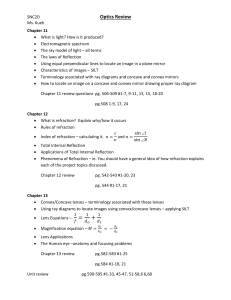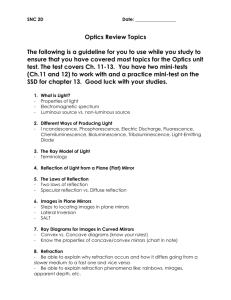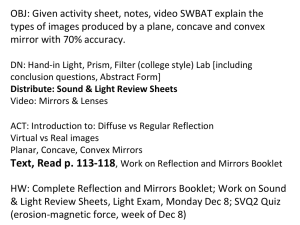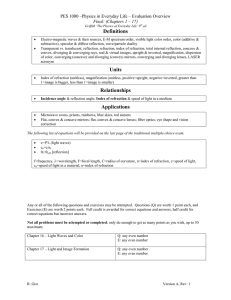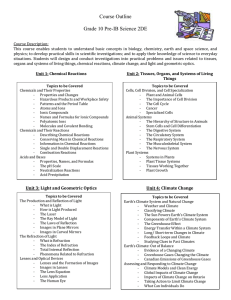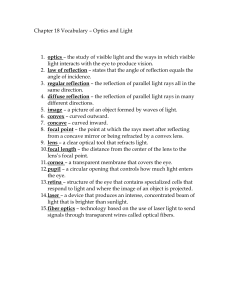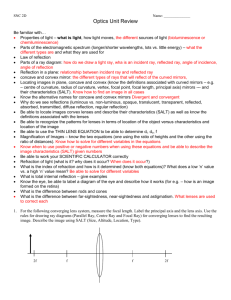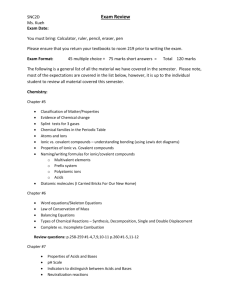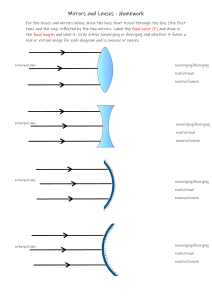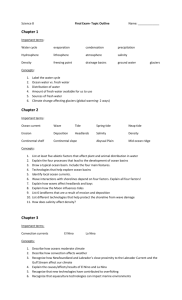Optics Unit Review
advertisement
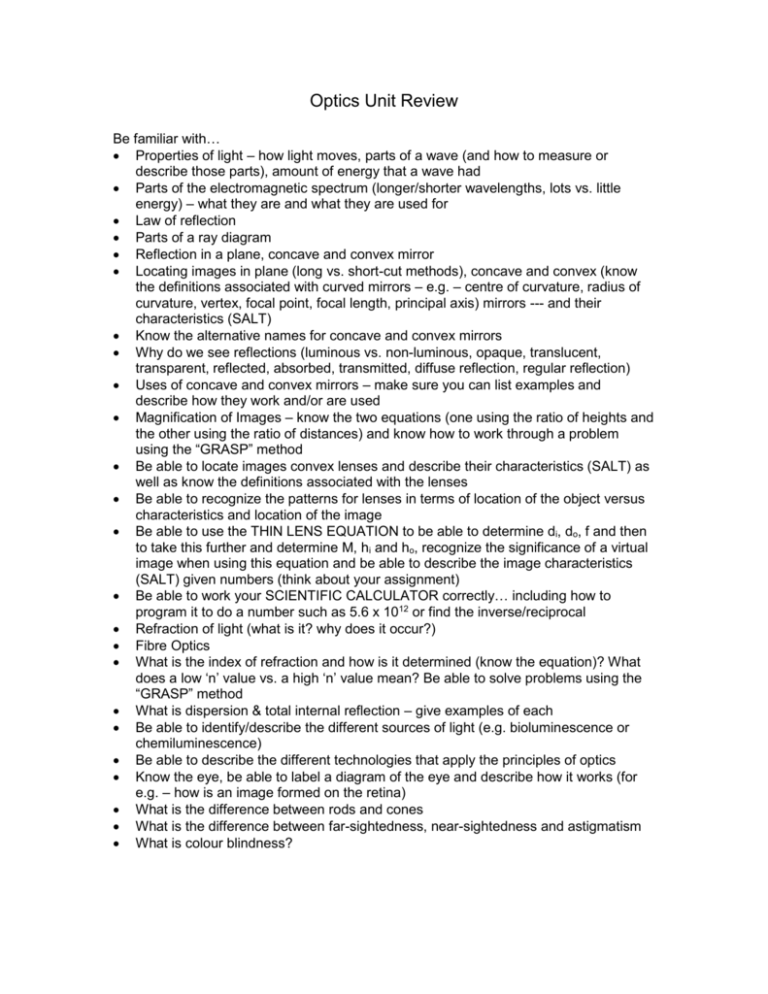
Optics Unit Review Be familiar with… Properties of light – how light moves, parts of a wave (and how to measure or describe those parts), amount of energy that a wave had Parts of the electromagnetic spectrum (longer/shorter wavelengths, lots vs. little energy) – what they are and what they are used for Law of reflection Parts of a ray diagram Reflection in a plane, concave and convex mirror Locating images in plane (long vs. short-cut methods), concave and convex (know the definitions associated with curved mirrors – e.g. – centre of curvature, radius of curvature, vertex, focal point, focal length, principal axis) mirrors --- and their characteristics (SALT) Know the alternative names for concave and convex mirrors Why do we see reflections (luminous vs. non-luminous, opaque, translucent, transparent, reflected, absorbed, transmitted, diffuse reflection, regular reflection) Uses of concave and convex mirrors – make sure you can list examples and describe how they work and/or are used Magnification of Images – know the two equations (one using the ratio of heights and the other using the ratio of distances) and know how to work through a problem using the “GRASP” method Be able to locate images convex lenses and describe their characteristics (SALT) as well as know the definitions associated with the lenses Be able to recognize the patterns for lenses in terms of location of the object versus characteristics and location of the image Be able to use the THIN LENS EQUATION to be able to determine di, do, f and then to take this further and determine M, hi and ho, recognize the significance of a virtual image when using this equation and be able to describe the image characteristics (SALT) given numbers (think about your assignment) Be able to work your SCIENTIFIC CALCULATOR correctly… including how to program it to do a number such as 5.6 x 1012 or find the inverse/reciprocal Refraction of light (what is it? why does it occur?) Fibre Optics What is the index of refraction and how is it determined (know the equation)? What does a low ‘n’ value vs. a high ‘n’ value mean? Be able to solve problems using the “GRASP” method What is dispersion & total internal reflection – give examples of each Be able to identify/describe the different sources of light (e.g. bioluminescence or chemiluminescence) Be able to describe the different technologies that apply the principles of optics Know the eye, be able to label a diagram of the eye and describe how it works (for e.g. – how is an image formed on the retina) What is the difference between rods and cones What is the difference between far-sightedness, near-sightedness and astigmatism What is colour blindness?
